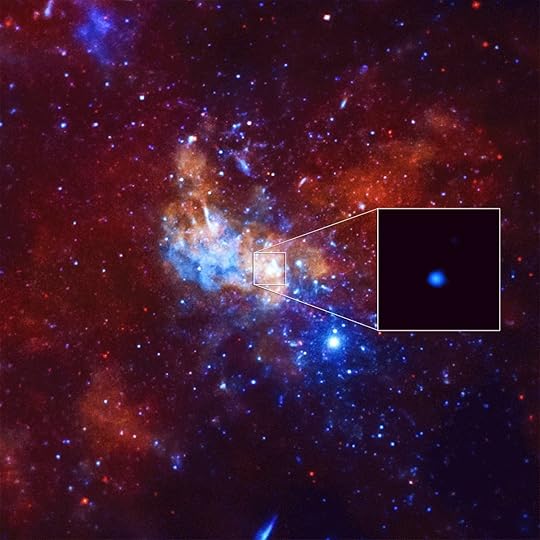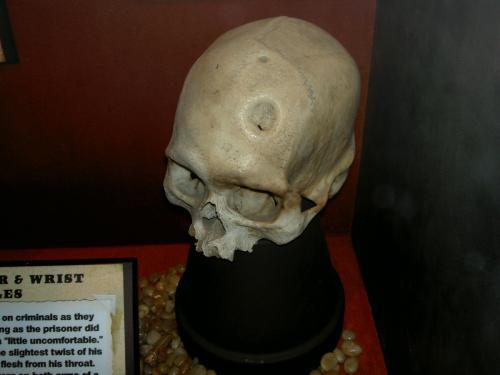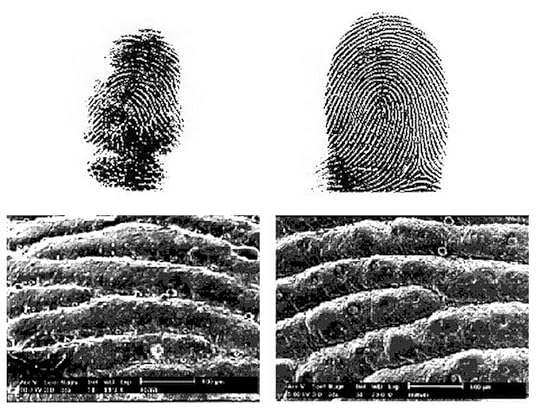Ripley Entertainment Inc.'s Blog, page 305
November 23, 2018
CARTOON 11-23-2018
November 22, 2018
Black Holes Are Neither Black, Nor Holes; So What Are They?
Featured in Ripley's Believe It or Not!

Or Not
In today’s world many misconceptions have been perpetuated—becoming modern day “facts”—when, in reality, myths and hearsay have taken over. Sorry to burst your bubble, but in this weekly column, Ripley’s puts those delusions to the test, turning your world upside down, because you can’t always…Believe It!
Today
: Black holes aren’t holes that are black.
With a theoretical history stretching all the way back to 1784, the idea of black holes has captured the collective imaginations of the public since the last half of last century. Thought to be a body so dense that even light cannot escape from it, black holes have become a powerful plot device, used as any way necessary, for just about any kind of science fiction story to date. But, as it turns out, black holes are neither black, nor holes. So, then…what exactly is a black hole?
The reality:
The idea of a black hole can be traced back to 1784 when English clergyman John Michell wondered aloud if a heavenly body could be so dense that even light could not escape from it. While he couldn’t exactly prove the existence of black holes, using the simplistic calculations at his disposal during the 18th century, Michell was able to surmise that supermassive bodies could be detected through the gravitational effects they would have on neighboring planets, moons, etc. That effect would turn out to be a key trait for discovering black holes. By the 19th century, however, most of Michell’s musings had been discredited.
Fast forward to 1915 and Albert Einstein’s theory of general relativity. You know…that easily recognizable, but impossible to explain E=MC2 that everyone knows? Well, that theory allowed for the development of what Michell believe to be true, and would eventually become known as black holes.

Through most of the 20th century, physicists continued to work on and challenge Einstein’s theory, expanding his work in certain areas, discrediting it in others. It wouldn’t be until 1964, though, when the terms “black” and “hole” would be used together to describe the theorized phenomenon. In a piece titled “Black Holes in Space,” journalist Ann Ewing threw the words together, for the first time, in an article after attending a meeting of the American Association for the Advancement of Science. It would be three additional years later before the name would catch on, though. Physicist John Wheeler, who’s credited for coining the phrase, used the verbiage again during a lecture in 1967. Shortly thereafter the words “black hole” would draw in the public’s imagination like a black hole does light.
So, if a black hole is neither black nor a hole, then what exactly is it? Simply put, a black hole is the remains of a supermassive star that’s collapse onto itself. These remnants tend to measure only a few miles in diameter (making them unimaginably dense) yet still have a gravity field strong enough to keep light from escaping. And because of that phenomenon, if one were to look upon one of these supermassive bodies from a safe very far-away distance, it would look like…wait for it…a black hole in the middle of space.

A black hole in the center of the Milky Way galaxy.
By Jesse Gormley, contributor for Ripleys.com
Source: Black Holes Are Neither Black, Nor Holes; So What Are They?
The Mad Minds Behind Hellthy Junk Food
Featured in Ripley's Believe It or Not!

Food junkies JP Lambiase and Julia Goolia of Orlando, Florida, are the architects behind Hellthy Junk Food—a website and YouTube channel featuring all sorts of unbelievably outrageous junk food creations that the couple makes themselves! In honor of our 100th anniversary, JP and Julia partnered with us to create something explosive—a grilled cheese volcano with tomato soup lava!
With Robert Ripley’s aspirations to have his very own volcano in mind—a feat he attempted in 1945—Hellthy junk Food decided to build their own unbelievable volcano out of grilled cheese and tomato soup:
In the end, this volcano required four cans of family-sized tomato soup, six loaves of bread, six packages of American cheese, and one jar of mayonnaise. The mayo was used in lieu of butter, and—according to JP—elevates the grilled cheese. The ingredients, plus two hours and 15 minutes in the kitchen resulted in a mountain of tomatoey magma and cheese with a total calorie count nearing 11,000.
After witnessing their crazy creation for ourselves, we had to know more at this dynamic duo, so we sat them down for an interview:
Q: What inspired you to start making crazy food and posting to YouTube?
A: We started the channel as a way of eating out less and still being able to enjoy our favorite restaurant foods at home. It was never our intention to make crazy food on YouTube, but it eventually turned into that when we realized our channel wasn’t so much instructional as it was entertaining. It wasn’t until we created the Pizza Cake over three years ago that the crazy food started to happen. Being a little odd or different in the food world evolved into what we are today.
Q: What has been the most difficult thing to make?
A: It would have to be the Junk Food House. We spent days drawing up blueprints, building, crafting, designing, etc. We wanted to show our junk food take on a gingerbread house for the holidays, making it out of our favorite savory junk foods.
Q: Do you eat everything?
A: No. We were both raised not to waste food, though, so every chance we get, when it’s something unmanageable for the two of us to consume, we invite friends over to eat with us. The best example of this is when we invited two competitive eaters over to our house and together they both polished off over 8 lb of food. Mind you, that was just an appetizer for them. They got a 32-in pizza after that.
Q: What was your most disgusting creation?
A: JP has created a lot of disgusting dishes, such as the Giant KFC Drumstick made out of a dog bone, frequently cross-contaminating various proteins and stuffing random food inside other food. But our most disgusting creation of all time has to be the ketchup and mayonnaise ice cream.
Q: Are there any creations that turned out so bad they were never released as an episode?
A: The only creation that we can recall that never made it as an episode was the Churro Fries; it just never panned out. We’ll show our fails on camera because at the end of the day it’s all about being 100 percent transparent with our audience. Nobody’s perfect. It’s okay to fail, and if you can learn from it, it’s that much better.
You can catch the rest of our interview with Hellthy Junk Food as well—as the full recipe for their grilled cheese volcano—exclusively in the pages of Ripley’s Believe It or Not! A Century of Strange! 
From conga-dancing dogs and bicycling ballerinas, to hair-raising feats of strength and death-defying motorcycle stunts, it’s sure to delight readers of all ages. With over 1,200 weird-but-true stories from around the world and 256 pages of wild and wonderful photography, this year’s collection of all things odd is not-to-be-missed.
Don’t miss out on being an ODDthority on everything strange, get your copy on Amazon today!
Robert Ripley’s Unbelievable Quest To Buy A Volcano
CARTOON 11-22-2018
November 21, 2018
CARTOON 11-21-2018
November 20, 2018
Set Of Skull Drill-Saws For Trepanation
Featured in Ripley's Believe It or Not!

Trepanation is the practice of drilling, cutting, boring, chiseling, or scraping into the human skull. It’s a practice that dates back to the earliest humans, with examples found from 10,000 BC. Despite being widespread and culturally common, however, historians are not always sure why people did it.
For a long time, modern man has thought this was a rudimentary surgical practice, used to relieve migraines or treat neurological disorders. Anthropologist Paul Broca made strides in the 1800s to understand how the different parts of the brain functioned. He would eventually go on to perform brain surgery based on the beginnings of modern neuroscience, but he was inspired by something that was far older. In 1867, he was shown a Peruvian skull which showed clear evidence it had been cut into. Trepanned skulls have been discovered before in areas across the world, but the example brought to Broca was cut in the shape of a rectangle. Prior to this, many had written off trepany skulls as having been struck by a weapon—not purposefully carried out while a person was alive.
Paired with his knowledge that brain surgery could be successfully carried out to help patients, Broca theorized that the trepanation had been used to great effect in ancient times. He explained that people sought to let the “evil spirits” out hurting their heads and that many even survived the procedures. His ideas, unfortunately, bled their way into the brains of his contemporary medical professionals.

This skull from Peru shows evidence of trepanation. (On display at the San Francisco Odditorium)
These misguided ideas would be interpreted into real-life practice in the early 1900s, with budding neurosurgeons deciding the could treat behavior with surgery. Trepanation burgeoned in practice alongside lobotomies—becoming a catch-all solution for any number of problems. Many juvenile delinquents for example, were referred to doctors for brain pressure relief in the 1920s, a procedure that carried a mortality rate of 42%.
CARTOON 11-20-2018
November 19, 2018
Koala Fingerprints Are Almost Indistinguishable From A Human’s
Featured in Ripley's Believe It or Not!

Now, we’re often told that monkeys (or apes, if you prefer) are our closest living relatives. The similarities are a little too close for comfort at times, as anyone who’s seen those guys lazily scratching their hindquarters at the zoo will tell you.
There’s a real humanity about these gentle, hairy souls, and an astonishing intelligence too. In the famous case of Koko the gorilla, they were shown to have the capacity to understand 2,000 words of English and use a vocabulary of 1,000 words of sign language. That’s amazing enough, but how about this: the similarities between chimp, koala and human prints are so strong that the Australian police once feared they’d be mixed up at crime scenes!
A Peculiar Police Raid
This curious story begins in 1975 when British police conducted a most unusual raid on the ape houses at London and Twycross Zoos. Their target? “Half a dozen chimpanzees and a pair of orangutans,” according to The Independent. The operation took place at a time when unsolved crime was becoming a bigger and bigger issue in the country, which somehow resulted in the fingerprints of these noble creatures being taken for analysis!
They weren’t found to be guilty of any criminal activity, funnily enough. All of this isn’t as absurd as it may sound, though. Steve Haylock, of the City of London police fingerprint bureau, explained the thought process. According to him, the operation took place partly because the police tend to refer to smudged or unclear fingerprints as ‘monkey prints.’
“If you passed a chimpanzee print to a fingerprint office and said it came from the scene of a crime,” Haylock said, “they would not know it was not human.”
In the event, the chimpanzees sat happily enough as their fingerprints were taken; and were not found to have committed any of the crimes that were baffling police at the time (again, unsurprisingly). If that was the end of the story, it would have been a fascinating little case study in and of itself, but there’s more to it. We’ll pick up this intriguing tale in Australia, where police feared that criminal investigations may have been hampered by koala prints!

Top row: Standard ink fingerprints of an adult male koala (left) and adult male human (right). Bottom row: Scanning electron microscope images of epidermis covering fingertips of the same koala (left) and the same human (right).
The Koala Conspiracy?
That’s right. As with the chimpanzees, koalas have fingerprints super similar to our own. The loops, the whirls, the fact that the patterns are completely unique to each individual koala… it’s uncanny. The reason why koalas have such prints is still a bit of a mystery to scientists (most tree-dwelling mammals don’t), but they’re here, they’re real, and they’re very, very human.
Maciej Henneberg, forensic scientist and biological anthropologist at the University of Adelaide, Australia, has stated that these iconic creatures’ prints could also easily be mistaken for our own: “It appears that no one has bothered to study them in detail… although it is extremely unlikely that koala prints would be found at the scene of a crime, police should at least be aware of the possibility.”
Some have gone so far as to say that, even after closely inspecting them under a microscope, investigators wouldn’t be able to tell human prints from a koala’s. Koala prints, they say, seem to have evolved independently, and much more recently than those of primates, as their closest relatives (kangaroos, wombats and such) don’t have them.

So Why The Prints?
What do humans, chimpanzees, and koalas have in common, then? The simple need to grasp things. As researchers at the University of Adelaide (who discovered koala prints in 1996) stated in their paper on the subject:
“Koalas … feed by climbing vertically onto the smaller branches of eucalyptus trees, reaching out, grasping handfuls of leaves and bringing them to the mouth… therefore the origin of dermatoglyphes [fingerprints] is best explained as the biomechanical adaptation to grasping, which produces multidirectional mechanical influences on the skin.
These forces must be precisely felt for fine control of movement and static pressures and hence require orderly organization of the skin surface.”
With all of this in mind, we can only hope that koalas and chimpanzees never decide to go off on wanton crime sprees. Imagine the confusion.
By Chris Littlechild, contributor for Ripleys.com
Source: Koala Fingerprints Are Almost Indistinguishable From A Human’s
CARTOON 11-19-2018
November 18, 2018
Robert Ripley’s Unbelievable Quest To Buy A Volcano
Featured in Ripley's Believe It or Not!

Robert Ripley was fascinated with natural disasters like volcanos—so much so that he even tried to buy one!
Ripley’s fame and obligations had stretched him to the breaking point. He was overwhelmed with the amount of work—from cartoon illustrations to radio broadcasts—and instead of giving it a shrug and chugging along, Ripley instead escaped to Cuba for the Christmas holidays.

It was there, at a New Year’s Eve party in Cuba, that he’d learned about a volcano that had mushroomed up from a cornfield in Mexico.
This farmer Dionisio Pulido was hanging in said cornfield, moving some branches to burn when he saw a vent of steam open up. Within a matter of moments, the ground swelled 5-feet high, and a fissure began vomiting up lava and ash. A volcano was being born before his very eyes!
Townsfolk thought the devil himself was clawing his way out of hell. In just 24 hours, the volcano had grown 160-feet high. Within weeks it had bulged to a five-story mound of steaming cinders, belching smoke and lava.

After returning from Havana, Ripley began negotiating with the farmer, whose claim to the land turned out to be somewhat vague. Mexican authorities finally told Ripley they weren’t keen on having an American own Mexican land, and the legislature hastily passed a bill making the volcano state property.

Earlier in 1944, Italy’s Mount Vesuvius had also erupted, the first such eruption since 1906, inciting Ripley’s obsession with owning his own volcano. When he learned about the one in Mexico, he began telling his buddies that owning it might fill a spiritual void, or that the volcano might contain minerals that would be a good financial investment. He also blabbed that he could have charged admissions and made money off it.

Dubbed Parícutin, the volcano reached a total height of 1,391 feet. Although most active in its first year, it continued to erupt until March 1952, when the eruption stopped as suddenly as it began. Parícutin was the first volcano scientists could fully document from start to finish. Even today, witnessing the life cycle of a new volcano is incredibly rare.

Ripley never did get his hands on a volcano, but Julia and JP—the minds behind the crazy food creations of Hellthy Junk Food—decided to make a spiritual successor to Paricutin for Ripley. Impressed with their grilled cheese and tomato soup creation, we invited them onto an episode of Cool Stuff Strange Things to give them the low-down on Rip’s volcanic aspirations.

Snacks anyone?
We couldn’t invite two of YouTube’s biggest food stars to Ripley HQ without offering up some unbelievable foods. Here’s some behind the scenes facts on their snacks:

An idea hatched in China 600 years ago, century eggs are made from preserved duck or quail eggs set in a mixture of clay, ash, quicklime, salt, and rice hulls for a few months. We also included some crickets as an extra-healthy option. They have more iron than beef and contain up to three times as much protein. The bowl their eating out of is called a kapala–it’s made from the top of a real human skull and was used by Tibetan monks to drink bloodwine.

Our popcorn bowl is made from a coco de mer—the world’s largest seed! before being hollowed out, these seeds, weigh about as much as three bowling balls! (Extra BION: According to an Ohio State University study, popcorn is more enjoyable when eaten with chopsticks!)
Ripley Entertainment Inc.'s Blog
- Ripley Entertainment Inc.'s profile
- 52 followers








